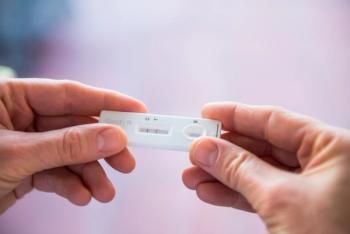
Hemolytic disease: Diagnosis, counseling and management
Red blood cell alloimmunization is the formation of maternal antibodies to fetal RBC antigens.
Key Points
Red blood cell (RBC) alloimmunization, also known as erythroblastosis fetalis,1 is the formation of maternal antibodies to fetal RBC antigens. These antibodies can lead to hemolysis and anemia in the fetus. Introduction of Rhesus (Rh) immunoglobulin has considerably decreased the incidence of Rh alloimmunization; however, irregular antigens, such as Kell, Duffy, and Kidd, remain an issue. Most recently, progress in the field of ultrasonography has improved management of this disease through less invasive means of anemia diagnosis. This article provides an overview of alloimmunization to Rh and other "irregular" antibodies.
Rh alloimmunization is a major medical issue in some parts of the world and is still a threat to women and their children in the United States. Data from 2003-the last year that the US National Center for Health Statistics collected data on Rh sensitization-indicate that Rh alloimmunization affected 26,040 of approximately 4 million live births (roughly 7 cases per 1,000).2 These numbers do not include alloimmunization from other blood groups.
The most common antigen causing alloimmunization in the US today is Kell, followed closely by Rh(D).3 Fifteen to 18% of Caucasians, 3% to 7% of Africans, and less than 1% of Asians fall into the Rh(D)-negative blood group.4 The majority of affected women have a homozygous deletion of the Rh(D) gene on the short arm of chromosome 1.
All women presenting for their initial prenatal visit should have their ABO blood group, Rh status, and antibody screen determined. Rh(D)-negative women with a negative antibody screen should receive 300 μg intramuscular anti-D immunoglobulin at 28 weeks' gestation. Although maternal sensitization is rare before 28 weeks' gestation, it does occur and the American Association of Blood Banks recommends a repeat antibody screen before immunoprophylaxis.5 If a patient has not delivered at 12 weeks after her first injection, administration of another 300-μg dose is recommended. Trials have not been conducted to test the efficacy of this regimen; however, it has been shown to decrease the incidence of antenatal alloimmunization from 2% to 0.1%.2,6 Different regimens, in terms of dosage and timing, are used in other countries, but are not reviewed here.
The same dose of immunoglobulin (300 μg) should be given within 72 hours after delivery if the neonate is Rh(D)-positive and delivery occurred at least 3 weeks after the first administration of immunoglobulin.7 When an Rh(D)-negative woman delivers an Rh(D)-positive neonate and anti-D immunoprophylaxis is given within 72 hours of childbirth, the incidence of alloimmunization is decreased by 96% at 6 months postpartum and 88% for the following pregnancy. If immunoglobulin is given postpartum as recommended but no antepartum doses are given, sensitization still can occur in as many as 2% of women. If the dose is omitted after delivery, immunoglobulin can be given for up to 28 days postpartum.
Special clinical situations
Other indications for anti-D immunoprophylaxis exist outside the routine antepartum and postpartum dosages outlined above. These are enumerated in Table 1 and all represent situations in which fetomaternal hemorrhage is a risk. A 300-μg dose of anti-D immunoglobulin is sufficient for as much as 30 mL of fetal whole blood in the maternal circulation.
When certain high-risk situations occur, such as abruption, manual removal of the placenta, or abdominal trauma, the amount of fetomaternal hemorrhage may be greater than 30 mL, and a Kleihauer-Betke (KB) stain should be ordered. This test determines the number of fetal cells in the maternal blood sample, and the appropriate immunoglobulin dose then may be calculated. Fetal blood volume may be calculated as follows, where maternal blood volume is assumed to be 5,000 mL:8
maternal blood volume × maternal hematocrit × % fetal cells in fetal blood volume = KB test newborn hematocrit
It is important to note that no specific anti-D immunoglobulin product has been shown to be more effective than others in preventing alloimmunization. Pricing and preferred mode of administration likely will be the primary considerations in selecting the product.
Newsletter
Get the latest clinical updates, case studies, and expert commentary in obstetric and gynecologic care. Sign up now to stay informed.
















